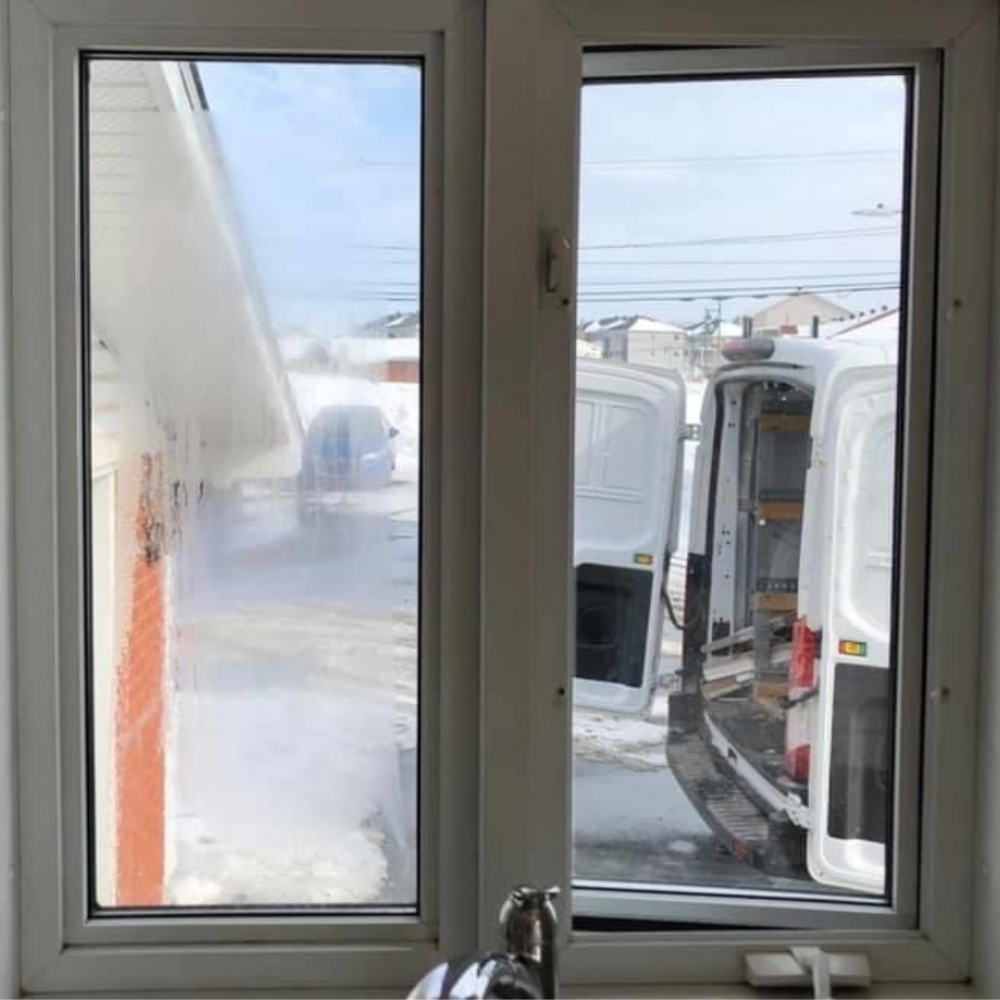
It is not uncommon to find yourself with fogged up thermos windows. With variations in temperature come variations in humidity. We then lose the clarity of our windows. Not to mention the consequences of fogged windows in the long term... So, what to do?
Don't worry, a simple defogging is probably your best option! Thermal glass has a long life span. However, they will be exposed to all sorts of irritants. It is therefore possible that after a while they will lose their effectiveness.
Learn to detect the signs of deterioration. You will see that the solutions are simpler than you think.
Why are my thermal windows losing their efficiency?
Your thermal windows are losing their efficiency and you don't know why? Several signs of deterioration can help you determine the cause:
• Glass breakage
• Thermal breakage
• Deterioration of the sealant
• Damaged seal
• Presence of fog between 2 glass panels
Fortunately, there is no need to completely change your windows. Each of these problems can be solved with simple repairs.
When it comes to fogging between thermos windows, defogging is the ideal solution.
Why are my thermal windows fogging up?
To understand why your windows are fogging up, you have to ask yourself, what is a thermal glazing (or sealed unit)? Over time, the absorbent material (silica) between the glass panels of a sealed unit becomes saturated with moisture. This is part of the aging process of your windows.
Over time, the sun's rays warm the moisture-saturated air between the two panes of glass in your sealed unit. As the air is warmer, it expands and increases the pressure inside the sealed unit. It is at this precise moment that the unpleasant fog starts to appear.
Condensation on your thermal window can take different forms. If the condensation forms on the outside of the glass, do not be alarmed. It is probably a caulking problem. If the condensation is between the two panes of glass, the solution is to defog them.
Condensation between your thermal glass panes can take different forms:

The dry fog called halo
This condensation problem can be recognized by the appearance of brownish powder between the panes. This problem is explained by a decomposition of the silica in the spacer of the panes. It is the sun which comes to yellow the whole.

The wet fog
This is another common condensation problem. It is recognized by the presence of water between the glass panels. This is mainly due to the reaction of the spacer which is either aluminum or intercept type (gray paste that melts or cracks very often in the sun).

The foggy mist
You can recognize this condensation problem by its grayish, foggy appearance. Often, when the sun falls on the window, the fog disappears. This phenomenon often occurs when the spacer is made of black rubber, felt or gray foam.
If your windows look like one of these, the solution is to have them defogged. The good news is that this solution is much less expensive than replacing your windows!
How to defog your thermal pane windows?
Defogging your thermal pane windows is a simple procedure. The first step is to drill two small holes in the sealed unit and then inject a cleaning product to purify the space between the glass. Then, the product is completely drained using a syringe and a catheter.
That's it! All that remains is to seal the incisions with strong valves. The drying and clarification work continues after the defogging and the recovery time of the treated unit can extend over a period of 5 to 8 weeks to obtain clear and transparent windows again.
Advice from the Basco Windows and Doors team
When you notice the presence of fog between your windows, don't wait to act, because if the deposit of residue becomes too important, it may become impossible to proceed with their defogging.* If necessary, our experts will be happy to provide you with an estimate for the replacement of thermal windows.
___
*Please note that defogging may not be suitable for all types of windows. Consult our experts for more information.